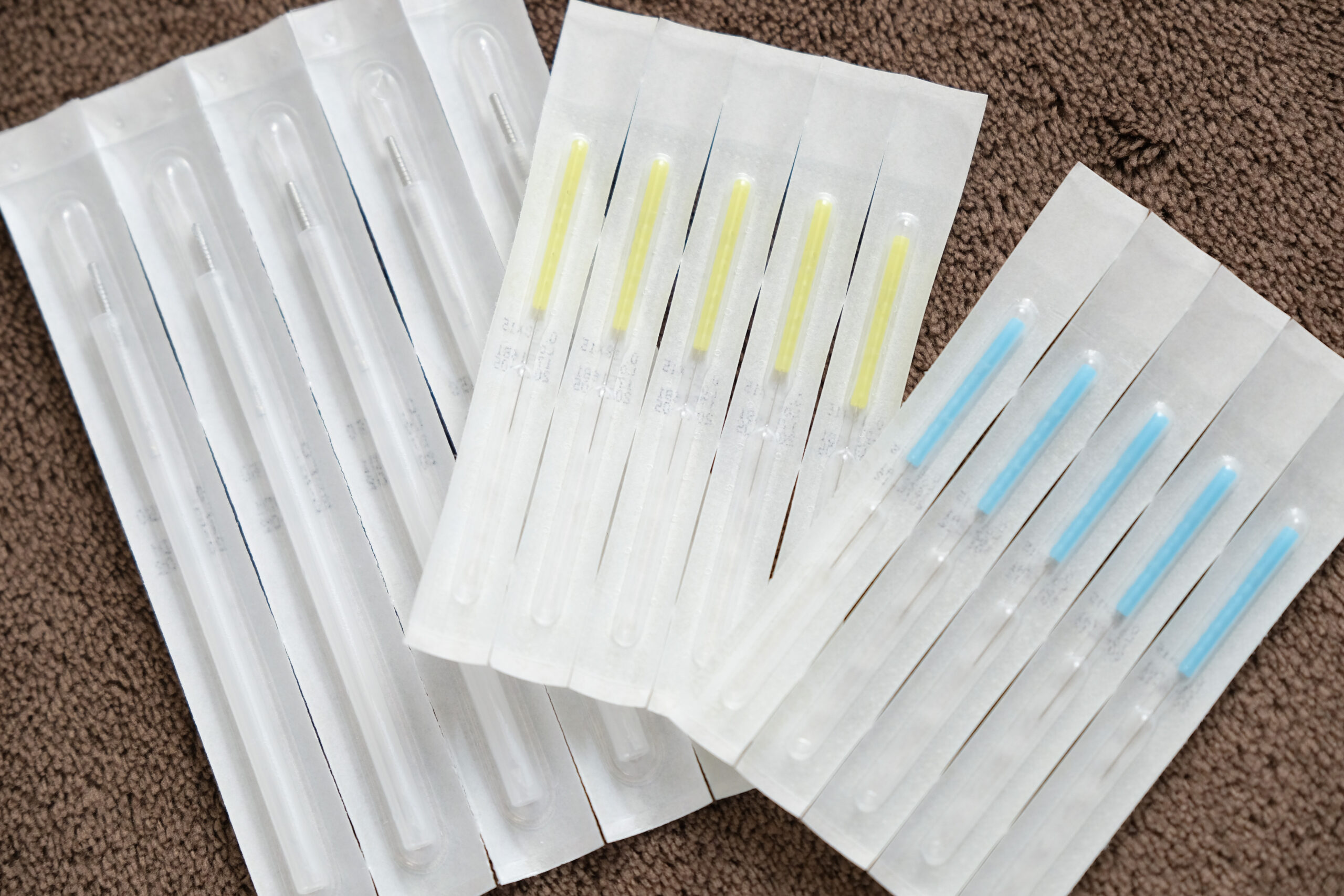In one of our blogs, we have explained the difference between acupuncture and dry needling. Now let’s talk about why it is important to use the right needle for you and understand handle types.
What Are the Different Types of Acupuncture Needles?
In ancient Chinese practice, there were as many as nine types of needles. In modern acupuncture, the following are the most common types of needles:
- Metal filiform, or thread-like, needle made from stainless steel
- Plastic-handled needles
These acupuncture needles can be made of silver or gold, as well. Their lengths generally range between eight millimeters and seven centimeters, while their diameters will vary from 0.012 millimeters to 0.35 millimeters.
Different Types of Acupuncture Needles Handles
Classic (or Traditional) Chinese Acupuncture Needle with Copper Loop Handle
Until about 50 years ago, acupuncture needles with copper handles used to be the dominant form of acupuncture needles. This had practical reasons, as acupuncture needles were traditionally produced in China in factories. Copper is a very flexible material, making it the easiest of all metals to wrap around a needle shaft.
When used as a material for the handle, copper gives the acupuncture needle a certain softness and flexibility. A flexible handle also provides the acupuncturist with direct feedback on how the patient responds to the treatment.
Acupuncture Needle with Spring Handle Without Loop
In one handle version from Korea, a stainless steel wire is wound into a tight spring wire. In this way, a long stainless steel wire creates a spring coil, which forms a thin tube without a loop. These tubes are then used as handles for acupuncture needles. However, by using the relatively rigid wire, the steel wire cannot be wound directly around the needle.
Instead, the handle tube is connected to the needle mechanically. These needles, like the ones with the copper loop handle, are suitable for both electro-stimulation therapy and moxibustion. However, the handle is much more rigid than a copper handle. It thus gives the physician less direct feedback on treatment than is the case with a copper-handled needle.
The advantage of this handle is purely visual in that a stainless steel handle does not tarnish over time, which may be the case with copper after longer storage. Hence in Medtac, our needles are spring-handled needles wrapped with stainless steel, due to its multipurpose properties and also longer storage time.
Dry Needle with an Inflexible Metal Tube Handle
Besides the classic or traditional Chinese acupuncture needle with a copper loop handle and spring handle needles, there were developed tubes made of metal that were connected to the needle by grouting. These needles have thicker handles, which improve the grip on the needles. Hence, while looking for a twitch response, it generates better control on hand grip. That’s the basic difference between acupuncture needles and dry needles.
Medtac is working with our suppliers to launch these types of needles in the future.
Modern Acupuncture Needle with Plastic Handle
In the 1970s, thanks to advanced injection molding technology, production methods for manufacturing cannula needles were applied to the production of acupuncture needles with plastic handles.
The handle was fused directly around the needle shaft. For this production method, extruded plastic tubes may also be used. The tubes are glued to the steel needle to form a handle by means of special adhesive techniques. The advantage of plastic handles is their relative rigidity. This handle, in conjunction with an excellently ground needle tip, makes it easier for a less experienced acupuncturist to position an acupuncture needle safely and painlessly.
Acupuncture needles with plastic handles are not suitable for moxibustion or electroacupuncture treatments.
Medtac had launched this type of needle in our variety, called the J type of acupuncture needles. These needles are available in our sample pack, but they only come in one size currently, which is 0.20 x 40 mm. Please order this sample size and let us know about it. Would you like to see more of this type in the future, as we are planning to invest a lot in this in the coming months?
Summary
In our opinion, there is not much difference if you are planning to do only acupuncture as a treatment option; you can use a copper handle or a spring handle, and the needles will both have the same effect. However, if you are planning to do dry needling, we would suggest using a spring handle without a loop because it is more sturdy and rigid than copper wiring; alternatively, you can use special dry needles or plastic handle needles if you are so inclined.
Plastic handle and metal tube handle needles are both ideal for dry needling and acupuncture. But we would not recommend a plastic handle for electroacupuncture.
References

